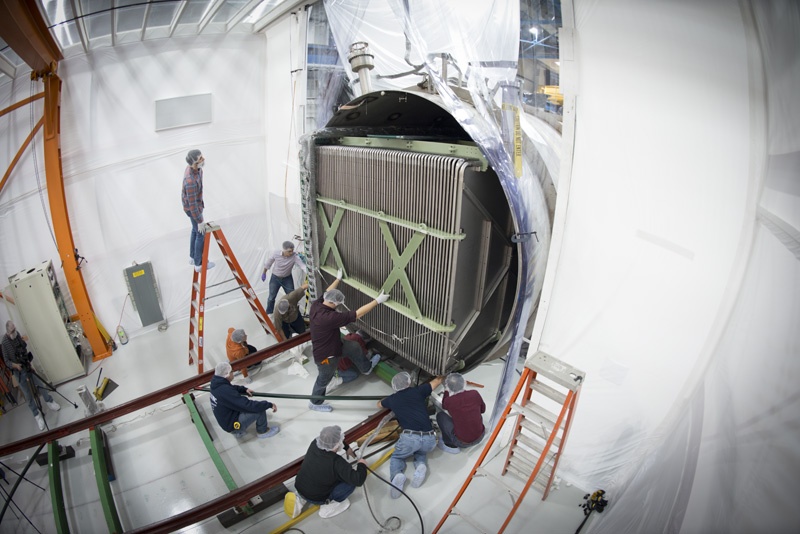We don’t know what dark matter is. We do know the characteristics of dark matter, and much of how it behaves, so we know what physical properties dark matter must have, but no known matter has all the necessary characteristics of dark matter. So we’re stumped.
The closest thing we have is neutrinos. They only interact weakly with other matter and don’t interact strongly with light, so they can be considered a form of dark matter. The only problem is that the three known varieties of neutrino all have extremely small masses. Because of this, they zip around the cosmos at nearly the speed of light. This means neutrinos are a form of “hot” dark matter, just as a hot gas is made up of fast-moving molecules. Based on dark matter observations such as the clustering of galaxies, we know that cosmic dark matter must be mostly cold. Neutrinos might make up a small portion of dark matter, but most dark matter must be something else.
 The helicity of neutrinos and anti-neutrinos. Credit: Universe Review
The helicity of neutrinos and anti-neutrinos. Credit: Universe Review
But because neutrinos are so close to satisfying the properties of dark matter, some scientists have argued dark matter might be a yet undiscovered variety known as sterile neutrinos. Like other elementary particles, neutrinos have a characteristic known as helicity. Basically, a neutrino can spin clockwise along its direction of motion (left-handed helicity) or counter-clockwise along its motion (right-handed). Most particles can have either kind of helicity, but neutrinos are odd. We only see left-handed neutrinos and right-handed anti-neutrinos.
This means that if right-handed neutrinos exist, they don’t interact with regular matter, only with gravity. Thus, they are “sterile.” And if they have a significantly larger mass than regular neutrinos, sterile neutrinos would be “cold,” and could be the solution to the dark matter problem. It’s a great idea, but unfortunately, as a new study shows, doesn’t seem to be true.
 The team inserts the time-projection chamber into the MicroBooNE cryostat. Credit: Reidar Hahn, Fermilab
The team inserts the time-projection chamber into the MicroBooNE cryostat. Credit: Reidar Hahn, Fermilab
This new study looked at data from Fermilab’s MicroBooNE collaboration. Neutrinos were beamed into the MicroBooNE detector to see what types of interactions occurred with regular matter. Earlier studies such as the Liquid Scintillator Neutrino Detector experiment at Los Alamos, and Fermilab’s MiniBooNE had detected more events than the standard model predicts. One possible solution to this mystery is that sterile neutrinos interacting with other neutrinos create an excess of electrons in the observed events. Another possibility is that background photons were skewing the data. The MicroBooNE collaboration is precise enough to look at either of these options and surprisingly rule out both options. The data rules out background photons with 95% confidence, and sterile neutrinos with 99% confidence.
If the earlier excess seen in MiniBooNE is a real effect (and we have no reason to suspect it is not) then something odd is going on. Sterile neutrinos might still exist, but their interacts must be more subtle than models predict. There could also be some complex interactions among regular neutrinos that are currently not considered in the standard model. Either way, there is much more to understand, and we have only begun to shine a light on the answer.
Reference: Abratenko, P., et al. “Search for Neutrino-Induced Neutral Current Delta Radiative Decay in MicroBooNE and a First Test of the MiniBooNE Low Energy Excess Under a Single-Photon Hypothesis.” arXiv preprint arXiv:2110.00409 (2021).

